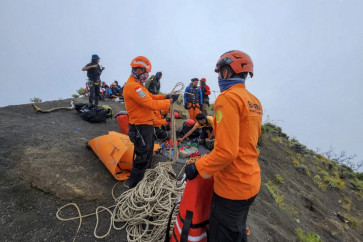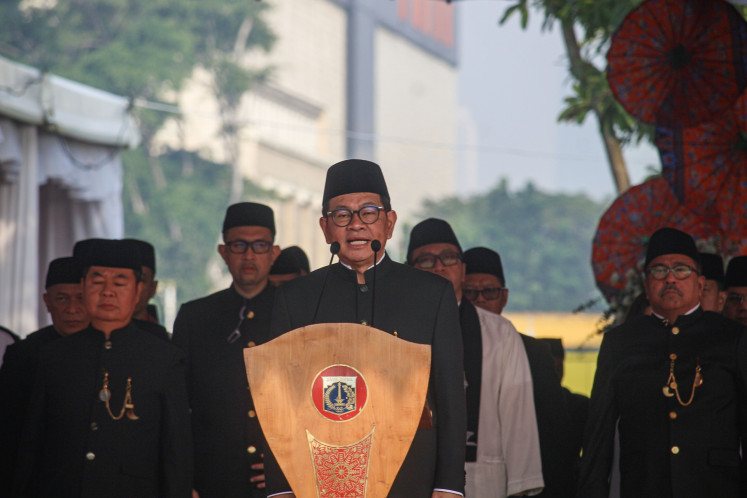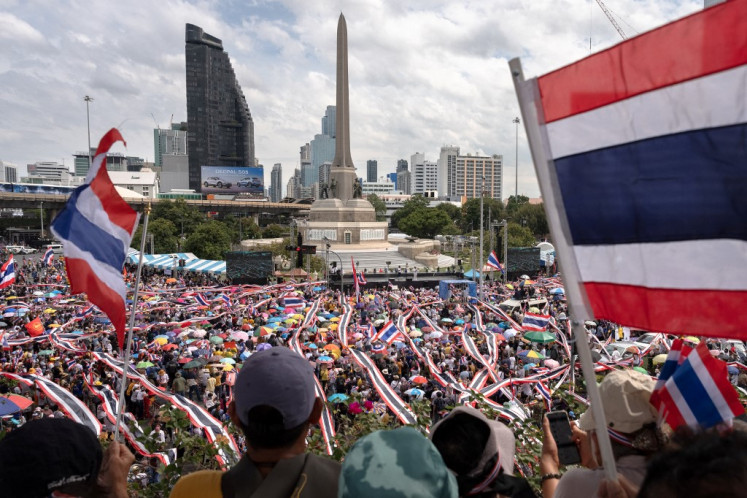Popular Reads
Top Results
Can't find what you're looking for?
View all search resultsPopular Reads
Top Results
Can't find what you're looking for?
View all search resultsDesigning for life in ideal setting
Many of Bali's resorts are, after three decades, still world leaders in tropical architecture
Change text size
Gift Premium Articles
to Anyone

M
any of Bali's resorts are, after three decades, still world leaders in tropical architecture. The island is also considered to be at the cutting edge in the application of traditional and sustainable materials in modern buildings.
These elements, in combination with Indonesian artisanship, make Bali the ideal setting for the "Design Life" exhibition and gathering of world-class designers.
Facilitated and curated by one of South East Asia and Australia's major design schools, RMIT in Melbourne, Australia, the exhibition at Gaya Artspace in Sayan brings together works of former RMIT alumni, explain the organizers of the "Design Life" exhibition, interior designer Suriawati Qiu and architect Jindee Chua.
"Under RMIT's architecture and design school, there are several streams including interior design, product design, fashion, landscape and architecture. Here in Bali, practitioners across these disciplines can see really interesting applications of traditional materials and also visit some of the islands resorts that continue to be world leaders in tropical architecture," said Jindee, citing hotels such as Amandari and Bulgari.
"Amandari was built in the 1980s and is still a leader in design. It is based on the Balinese compound idea. On the other hand, there is Bulgari. Designed by an Italian architect, it recreates the island of Bali with its design. It's incredible - the culture informs that design."
The alumni gathering for the "Design Life" exhibition will visit these hotels to gain inspiration as well as a deeper understanding of fine tropical architecture, and how good architecture can echo landscapes, while architecture out of sync with its environment can blot out that landscape or culture.
Thirty RMIT pan-Asian alumni drawn from Korea, Nepal, India, Australia, Malaysia, Thailand, Singapore and Indonesian will examine advances in traditional materials and their application.
“Design Life” exhibition organizers, interior designer Suriawati Qiu and architect Jindee Chua. JP/J.B. Djwan
"Bali has a lot to offer designers, not just in tourism, but in terms of design. We will focus on the materials coming out of Bali and on its artisans. We will visit Green School to see bamboo construction," said Jindee.
They will also discuss how bamboo can become a more important building material, especially from a conservation and environment standpoint, he added, when referring to the role Bali can play in advancing alternative materials.
He pointed out one of the problems with many new designs throughout Asia was the dependence on cement and bricks and disregard for tried and true traditional materials.
"Bamboo has traditionally been one of the most versatile materials in Asia. You see it used in utensils, birdcages, screens, buildings and scaffoldings. Because we have been so into modern materials, such as cement and steel, bamboo has not been seen as a fit building material, yet it can be as strong as iron," said Jindee, hoping the exhibition and seminar will broaden designers' understanding and appreciation of materials such as bamboo.
The designers will not look only at finished buildings, but also at the elements that go into their creation, explains interior designer, Suriawati.
"We will visit an artisan making bamboo paper. There may well be far more potential in this than is currently being explored. It could be re-applied to produce building materials also," she says, with banana paper just one example of how sustainable materials can be tweaked to form new building materials.
Both Jindee and Suriawati believe Bali is an important center for design in the Asia-Pacific region. Its strategic location, straddling Asia, New Zealand and Australia, in tandem with fine artisanship, new materials and innovation in their application, makes the island a valuable ideas bank for designers from across the region.
"Bali, in terms of design, is about its creativity. Bali is not about one individual *design* stream but multiple streams. People designing or sourcing materials here are passionate and I feel that is what is special about designing in Bali. That is what we want to share through this exhibition," said Suriawati.
The RMIT alumni exhibition will also highlight the works and projects of the design schools former pan Asia students.
The "Design Life" exhibition opens at Gaya Artspace on Dec. 4.









